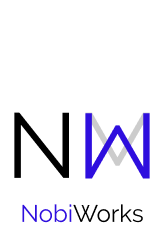The Stakeholder Starter Pack
It seems absurd that I haven’t really provided a written resource on stakeholders.
But I haven’t.
And while that’s totally on me, I also want to draw attention to why that’s the case:
my belief this piece must be a fully fledged, beautifully rendered article.
I genuinely did not think this would be worth writing if it did not detail my theory of everything stakeholders.
I want to be transparent about this because, frankly, I know I’m not the only one who feels this way about their work.
I want to give you permission.
Write that thing and publish it. Even if it’s only a paragraph long.
That paragraph might be just the thing your audience needs.
What are stakeholders?
Stakeholders are what I call the motivational segments that make up your corner of the world. You are part of an ecosystem. And if you’re trying to amplify a world changing idea, you are trying to make behavior change happen at scale. You cannot attempt behavioral design—especially at that scale— without some understanding of the motivational currents that surround the behavior change you’re looking to make happen.
Why are stakeholders important?
Well, stakeholders represent the people who will be making the decisions you’re looking to influence. Looking to be in certain decision making rooms? You’ll probably encounter some gatekeepers. Looking to make a high profile opportunity materialize? I’ll bet a mediator will be involved at one point or another. You can think of them as satellites that reinforce your signal. As an underrecognized person, that signal is already being weakened by visibility biases and the Invisibility Tax. So understanding the ecosystem of stakeholders connected to your goals and having your own network of strategically selected stakeholders is vital.
Here are the stakeholder types.
I call this your stakeholder starter pack, because there can and often will be more stakeholders than these:
Protagonists— These are the decision makers or decision agents. Often, they are who your ideas are meant to support.
Remember though, a stakeholder ecosystem is built with behavior change in mind. So while your protagonist is the decision maker, what that means can and often does change depending on the behavior change goal.
If the behavior change you’re after is “buy this app now” then your protagonist is also likely the person you built the app for.
If the behavior change you’re after is “approve this turnkey workplace training” then your protagonist might be the person with final approval authority—not the person you built the training to support.Champions— These are former decision agents. Former protagonists. They’ve made the decision you’re hoping your protagonists will. And they’re ready to sing your praises.
Gatekeepers— These are the stakeholders standing between you and opportunities you need or want. They’re not necessarily adversaries. Sometimes they’re just the guy standing at the door, and they’re really looking forward to making cookies with their kids once they get home.
Mediators— These are the stakeholders who directly connect you to opportunities. This can look like that well connected friend, who hears about an opportunity you’d be a great fit for and connects you via email to the person in charge. Now this stakeholder type may sound familiar, and that’s because gatekeepers are/can be a kind of mediator. Not all mediators are gatekeepers though.
Advocates— These stakeholders are the folks speaking about you and your work in rooms you don’t happen to be in yet. And if that sounds familiar, that’s because Champions can be advocates. Not all advocates are champions.
At a minimum, you will need all five of these stakeholder types in your circle of recognition—especially as an underrecognized leader. In order for your work and ideas to spread where you need them to, you will also need these stakeholders to be strategically positioned to reinforce the amplification process.
Identifying, understanding, and strategically selecting these stakeholders is a key part of the work I do with my clients in the Visibility Catalyst Program. So, if a structured process for building a fruitful network designed to amplify your ideas in the right sorts of ways sounds like just the thing…well, I have just the thing.
And if you’d like to learn more about Visibility Engineering™ in general you’ll find more details about how it works and why here.
Resources/places I’ve spoken about this in more detail:
How to be seen off social media—Off the Grid Podcast
Your Circle of Recognition and Workplace Transitions—Leaving Well Podcast

